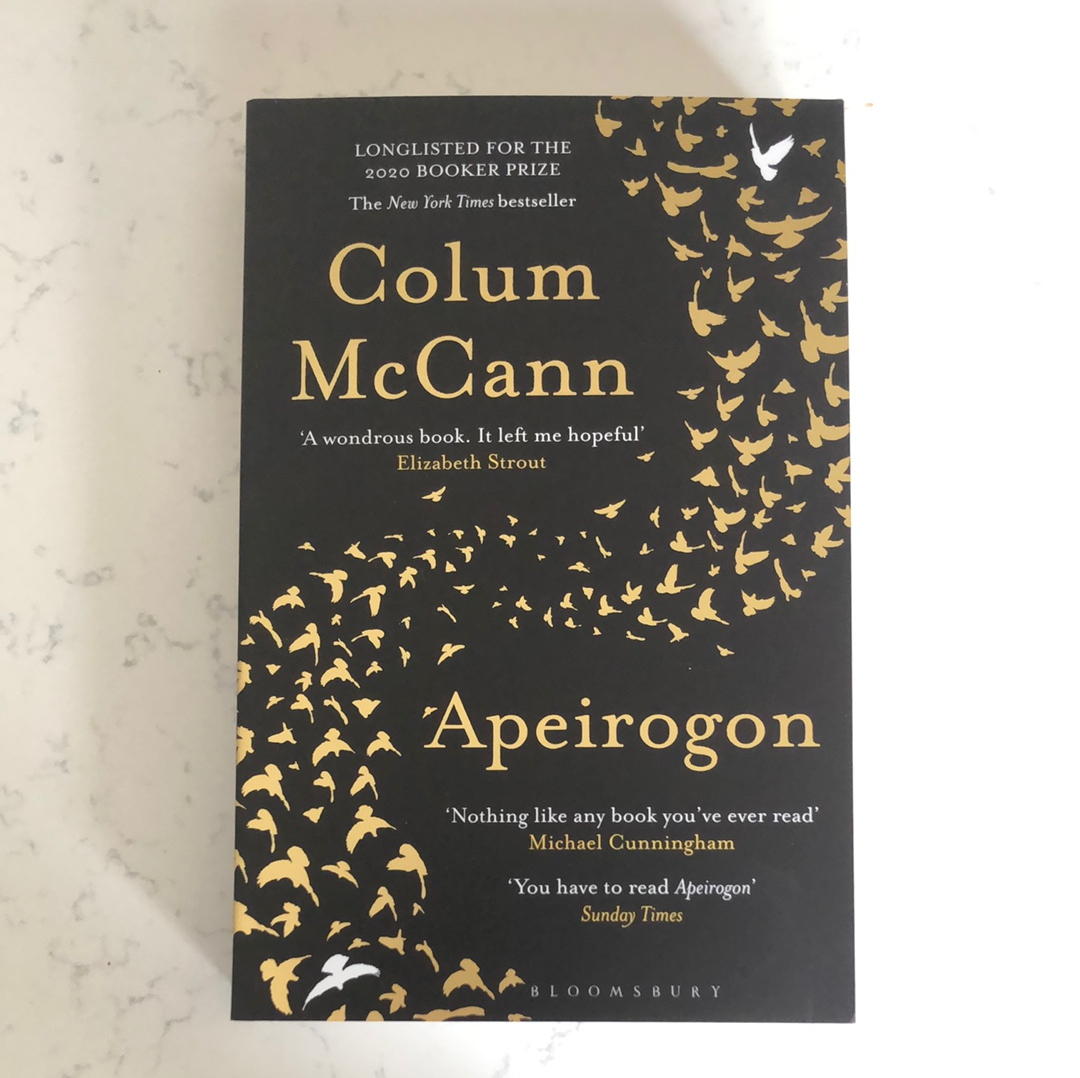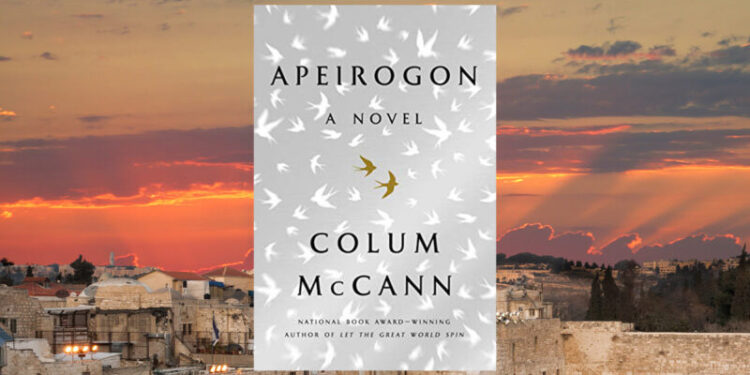Introduction
Apeirogon Summary And Themes By Colum McCann Apeirogon, written by Colum McCann, is a novel that delves into the complexities of grief, reconciliation, and the human condition, set against the backdrop of the Israeli-Palestinian conflict. Through a multifaceted narrative, McCann explores how two fathers, one Israeli and one Palestinian, navigate the unthinkable loss of their daughters. The novel is an exploration of memory, trauma, love, and the efforts to heal amid decades of violence and division.
Drawing from real-world events, Apeirogon weaves together the personal and the political, offering readers an emotional journey through pain and hope, tragedy and resilience. McCann’s work not only examines the lives of these two fathers but also reflects on the broader implications of conflict, the way history shapes the individual, and the possibility of peace amidst seemingly endless cycles of suffering.
At its core, Apeirogon is a testament to human endurance and the profound impact of personal loss, framed within the context of a global conflict. The novel takes its name from a geometric figure with an infinite number of sides, symbolizing the infinite facets of the human experience, loss, and the complexity of the Israeli-Palestinian conflict.
Summary of Apeirogon
Apeirogon follows the lives of two central characters, Bassam Aramin, a Palestinian, and Rami Elhanan, an Israeli. The novel alternates between their stories, reflecting their experiences with loss and the quest for peace.
Bassam Aramin is a Palestinian man whose 10-year-old daughter, Abir, was killed by an Israeli soldier while walking home from school in the West Bank. Rami Elhanan, an Israeli man, lost his 13-year-old daughter, Smadar, in a terrorist bombing in Jerusalem. Their paths cross in an effort to reconcile their personal tragedies, not as enemies, but as fathers who share the same unimaginable grief.
Through their individual stories, McCann examines their lives before and after the loss of their daughters, how their personal histories shaped their understanding of the conflict, and how these shared tragedies lead them to work together in a project of reconciliation. They join the Parents Circle-Families Forum, an organization that brings together bereaved families from both sides of the Israeli-Palestinian conflict in the hope of fostering understanding and peace.
The narrative structure of Apeirogon is non-linear and fragmented. McCann employs a unique storytelling technique, breaking the book into 1001 short sections, each serving as a brief vignette or reflection, allowing the reader to move through time, space, and memory freely. The novel is filled with historical anecdotes, geographical references, and philosophical musings, using the form of a “fragmentary” narrative to mirror the fractured lives of its protagonists.
While the novel tells the individual stories of Bassam and Rami, it also expands into a broader examination of the consequences of the Israeli-Palestinian conflict. McCann weaves in the histories of the region, the political struggles, and the hopes for peace, all while reflecting on how the human experience transcends political boundaries. The juxtaposition of the deeply personal and the larger political context makes Apeirogon both an intimate and global narrative.

Themes in Apeirogon
- Grief and Loss: The most significant theme in Apeirogon is the overwhelming grief experienced by the two fathers. The novel is not merely about the political conflict between Israel and Palestine but about the profound, personal loss that shapes the lives of Bassam and Rami. McCann dives deeply into the emotional and psychological effects of losing a child, showing how this tragic experience redefines their identities and their worldview. Each father is on a path of mourning, processing their grief, and trying to make sense of their suffering in the context of the larger conflict.
Bassam and Rami’s pain is not just personal but collective, as they come to realize that their losses reflect the broader suffering of many families, on both sides of the conflict. Their shared loss, despite originating from opposite sides of the political divide, becomes a unifying force that transcends the hatred and division surrounding them. McCann emphasizes that grief, no matter its source, is universal and has the power to connect people even in the most divided circumstances.
Read more
- Reconciliation and Forgiveness: In Apeirogon, the possibility of reconciliation is a fragile but important theme. The novel demonstrates that, although their personal losses are profound, Bassam and Rami choose to use their pain to try to build understanding between Israelis and Palestinians. The novel portrays how individuals can work toward reconciliation and peace, even when the political systems and societies around them seem intractable.
McCann shows that reconciliation is not just about finding common ground but about acknowledging the deep, often uncomfortable truths that separate people. It requires vulnerability, courage, and the willingness to move beyond one’s own pain in the hope of healing the broader wounds. Through the efforts of Bassam and Rami, McCann suggests that peace is possible, but it must come through difficult, painful personal work—work that requires understanding the humanity of those on the “other side.”
- The Complexity of Identity: The novel also examines the complexity of personal and collective identity. Bassam and Rami both struggle with their identities as Palestinians and Israelis, respectively, especially after the deaths of their daughters. They question how their national and cultural identities have shaped their lives and their decisions. Their personal grief forces them to confront these identities and their roles within the larger context of the conflict.
The theme of identity is not limited to these two characters; it extends to how identity is shaped by collective narratives, history, and the memories of past trauma. McCann suggests that identity is fluid, evolving, and often influenced by the external forces of politics, culture, and war. The novel explores how Bassam and Rami both resist and embrace certain aspects of their identities in their search for healing.
- The Israeli-Palestinian Conflict: McCann’s novel does not shy away from the political realities of the Israeli-Palestinian conflict. Although the novel is rooted in personal loss, it frequently zooms out to provide historical context, showing how the wider political and social issues impact individuals on both sides of the divide. The conflict is not presented in simplistic terms; rather, McCann highlights the complexity of the situation and the deep pain experienced by both Israelis and Palestinians.
Throughout Apeirogon, McCann emphasizes that the political struggle is not just about territorial disputes but about the humanity of those involved. He depicts the long-standing hatred and the cycles of violence, but he also introduces moments of hope—instances where understanding and dialogue break through the political rhetoric.
- Hope and the Possibility of Peace: At its heart, Apeirogon is a hopeful novel. Even though Bassam and Rami have suffered immeasurable loss, they continue to work towards a vision of peace, not as political leaders, but as fathers who understand the human cost of conflict. McCann explores the possibility that, even in the darkest times, peace can be achieved through empathy, dialogue, and a shared understanding of human suffering.
The structure of the novel—its fragmented and multi-layered storytelling—mirrors this theme of hope, suggesting that while the road to peace is not linear, it is still a path worth pursuing. The infinite number of fragments in an apeirogon (the geometric shape referenced in the title) symbolizes the multiple perspectives and the ongoing, often painful, journey toward reconciliation.
Literary Techniques in Apeirogon
- Fragmented Narrative: One of the most distinctive features of Apeirogon is its fragmented narrative structure. The book is divided into 1001 short chapters, each contributing a different perspective or vignette. This fragmented style mirrors the fractured lives of the characters and their attempts to piece together their identities and experiences. The use of fragments allows McCann to explore the complexity of the characters’ emotions, histories, and the broader conflict in a way that is non-linear but deeply resonant.
Read more
- Geometric Symbolism: The title Apeirogon, referring to a shape with an infinite number of sides, is central to the novel’s thematic structure. The infinite sides of the apeirogon represent the infinite ways in which human lives and histories intersect and overlap. McCann uses this symbolism to show that there are many perspectives and experiences within the conflict, and each person’s story has multiple dimensions. The shape also symbolizes the infinite ways in which memory and trauma can be revisited, reinterpreted, and understood.
- Multiple Perspectives: The novel is written from the perspective of both Bassam and Rami, alternating between their voices and their personal stories. McCann also brings in voices from other characters, historical events, and philosophical musings. This polyphonic narrative enriches the storytelling by showing how the personal and the political are intertwined, and how individual actions reverberate through a wider cultural and historical context.
- Historical and Geographical References: McCann integrates numerous historical and geographical details, including references to significant events in the Israeli-Palestinian conflict, as well as the lives of other figures in the region. These references provide context and depth to the novel, grounding the personal stories within the larger political landscape. They also serve to illustrate the shared history of suffering that transcends individual grief.

Conclusion
Apeirogon is a powerful exploration of grief, reconciliation, identity, and the quest for peace amidst the Israeli-Palestinian conflict. Through the intertwined stories of Bassam Aramin and Rami Elhanan, McCann weaves a narrative that is at once deeply personal and universally political. The novel challenges readers to consider the possibility of healing and transformation, even in the face of profound loss and historical conflict. With its innovative narrative structure, Apeirogon offers a moving reflection on the power of memory, love, and the human desire for understanding.
Read more
FAQs
1. What is the meaning of the title Apeirogon?
The title refers to a geometric shape with an infinite number of sides, symbolizing the infinite perspectives, experiences, and ways in which individuals’ lives intersect and overlap, much like the multifaceted lives of the novel’s characters.
2. Who are the main characters in Apeirogon?
The main characters are Bassam Aramin, a Palestinian father who lost his daughter in a military shooting, and Rami Elhanan, an Israeli father whose daughter was killed in a bombing. Their stories intersect through their shared grief and efforts for reconciliation.
3. What is the central theme of Apeirogon?
The central theme of Apeirogon is grief and reconciliation. It examines how two fathers, from opposing sides of the Israeli-Palestinian conflict, navigate their personal losses and work together for peace and understanding.
4. How does McCann structure the novel?
The novel is structured into 1001 short chapters, each functioning as a fragment that contributes to the larger narrative. This fragmented approach mirrors the complexity of the human experience and the difficulty of understanding the whole through any single perspective.
5. What is the role of the Israeli-Palestinian conflict in the novel?
The Israeli-Palestinian conflict serves as the backdrop for the personal stories of the characters. While the novel is focused on individual grief, it also provides a broader commentary on the political and cultural divisions that shape the lives of those involved in the conflict.
Read more

















